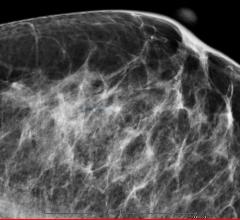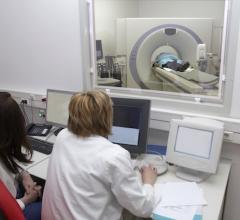If you enjoy this content, please share it with a colleague
RELATED CONTENT
New and updated evidence-based guidelines to help healthcare providers choose the most appropriate medical imaging exam or radiation therapy for a patient’s clinical condition are now available via the latest version of the American College of Radiology appropriateness criteria. These continually updated criteria are a national standard developed by expert panels of physicians from many different medical specialties.
Since its launch, less than two years ago, more than 5 million computed tomography (CT) scans, and nearly 3 million exams, have been added to the American College of Radiology (ACR) Dose Index Registry (DIR) — bringing the ACR closer to establishing national benchmarks for CT dose indices, which will help ensure patients receive safe, quality imaging care.
According to an article in the January issue of the ACR Bulletin, the ACR recently donated a one-of-kind film of Marie Curie receiving the ACR Gold Medal in 1931 to the Curie Museum in Paris. Famous for the discovery of polonium and radium, Curie was recognized by the ACR for her significant contributions to the field of radiology.
Availability of CT colonography (CTC), commonly known as virtual colonoscopy, is increasing colorectal cancer (CRC) screening rates across military medical facilities. Inclusion of CTC as a Healthcare Effectiveness Data and Information Set (HEDIS)-compliant colorectal cancer (CRC) screening test can potentially raise overall screening rates, according to a study in the January issue of the Journal of the American College of Radiology.
A new Harvey L. Neiman Health Policy Institute study shows that fewer than one-in-five healthcare providers meet Medicare Physician Quality Reporting System (PQRS) requirements. Those that meet PQRS thresholds now receive a .5 percent Medicare bonus payment. In 2015, bonuses will be replaced by penalties for providers who do not meet PQRS requirements. As it stands, more than 80 percent of providers nationwide would face these penalties.
September 7, 2012 — The American Medical Association (AMA) recently sent letters to Sen. Ben Cardin of Maryland and Rep. Pete Olson of Texas supporting passage of the Diagnostic Imaging Services Access Protection Act (H.R. 3269/S. 2347).
August 28, 2012 — According to the American College of Radiology (ACR), a paper by Gierach et al. in the Journal of the National Cancer Institute (which is not the National Cancer Institute's journal) says that, although they are at a small increased risk of developing breast cancer, women with dense breast tissue (a large percentage of fibrous and glandular tissues) are not at an increased risk of dying from breast cancer when compared to women with mostly fat in their breasts.
August 13, 2012 — The new Harvey L. Neiman Health Policy Institute (HPI), established by the American College of Radiology (ACR), will examine the role of radiology in new healthcare delivery and payment models — particularly quality-based approaches to radiologic care and the impact of medical imaging on overall healthcare costs.
July 30, 2012 — A study (Lee and Levy) published in the August issue of Health Affairs reconfirms results of previous studies that imaging use in Medicare is down significantly over the last several years (Moran Report) and that imaging is among the slowest growing of all physician services among privately insured Americans (Health Care Cost Institute). However, the list of factors cited for this decline is incomplete and the drop in imaging use is not without adverse consequences.
July 23, 2012 — A recent study published in the American Journal of Roentgenology has reconfirmed that virtual colonoscopy (CT colonography) is an effective screening tool for colorectal cancer in seniors age 65 and older.

 February 26, 2013
February 26, 2013 





